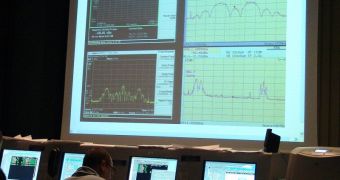Europe's second spacecraft of the Galileo mission has been launched successfully into space on April 27. Soon after, the GIOVE-B satellite entered the designated orbit at an altitude of 23,173 kilometers above the planet's surface and spread its solar panels so that the on board batteries could start charging. The current orbital altitude allows the satellite to make a complete rotation around Earth in only 14 hours and 3 minutes. Today, the GIOVE-B spacecraft started transmitting its first signal back to Earth, in the form of multiplexed binary offset carrier wave relaying navigation signals.
The Passive Hydrogen Maser clock carried on board by the GIOVE-B satellite will ensure that these signals are transmitted back to Earth with enhanced accuracy, although high multipath and interference are present, thus allowing deeper penetration for indoor navigation. GIOVE-B is fully compatible and interoperable with the US GPS system.
"Now with GIOVE-B broadcasting its highly accurate signal in space we have a true representation of what Galileo will offer to provide the most advanced satellite positioning services, while ensuring compatibility and interoperability with GPS", said Javier Benedicto, Galileo Project Manager.
After completing the Early Operations Phase, the payload carried on board was switched on and the spacecraft commissioned at the same time with the transmission of the first signal. Control centers across Italy, Netherlands, Belgium and the UK are now analyzing the signal quality and accuracy to verify whether they are within the system's design specifications, since signal quality is extremely important in the accuracy of positioning information sent to a receiver on the ground.
Orbital environment and signal propagation paths can affect the signal quality, although the spacecraft is operating within normal parameters. Alternatively, engineers must make sure that the transmitted signal itself does not interfere with signals on the adjacent frequency bands. Signal power, center frequency and bandwidth checks must also be performed to verify whether the three frequency bands reserved for the spacecraft are secured.

 14 DAY TRIAL //
14 DAY TRIAL //